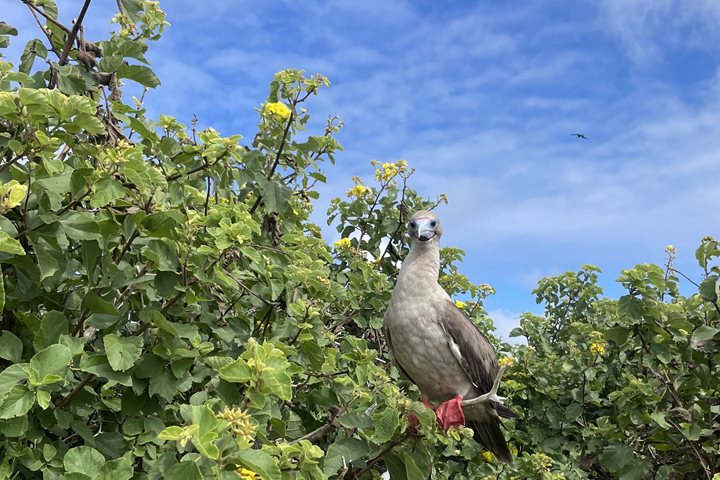Passengers of the National Geographic Endeavor II spent the day exploring the beautiful island of Genovesa. Commonly referred to as the “Bird Island,” Genovesa’s steep cliffs and nutrient rich waters make the perfect habitat for many seabirds, including the largest colony of red-footed boobies. Other seabirds sighted were the Nazca booby, the frigate bird, the storm petrel, and the blue-footed booby. Land birds included the elusive short-eared owl, which can be seen hunting swarms of storm petrels around the steep cliffs of the island. Guests were particularly impressed by the mating behavior exhibited by the Nazca boobies and the brilliant red feet of the red-footed boobies, perched in every palo santo tree and saltbush on the Prince Phillips trail.
5/29/2025
Read
National Geographic Gemini
Genovesa Island
Genovesa is considered one of the Galapagos crown jewels, and today it was showing off all of its splendor. Immediately after breakfast we put on our sturdy shoes and set out to explore Prince Philip’s Steps. This area is known for opportunities to observe not only large colonies of nesting Nazca and red-footed boobies, but maybe, just maybe, the short-eared owl which exhibits diurnal behavior on this island. After this walk we got ready for a dip in the Pacific Ocean and snorkeling along the inner coast of this caldera. The afternoon was equally amazing as we disembarked to explore Darwin Bay, along a short and easy trail that was packed with wildlife. Here we observed not only nesting frigatebirds, red-footed boobies, and Nazca boobies, but also a few yellow-crowned night herons. It was another incredible afternoon in the Galapagos Islands.








